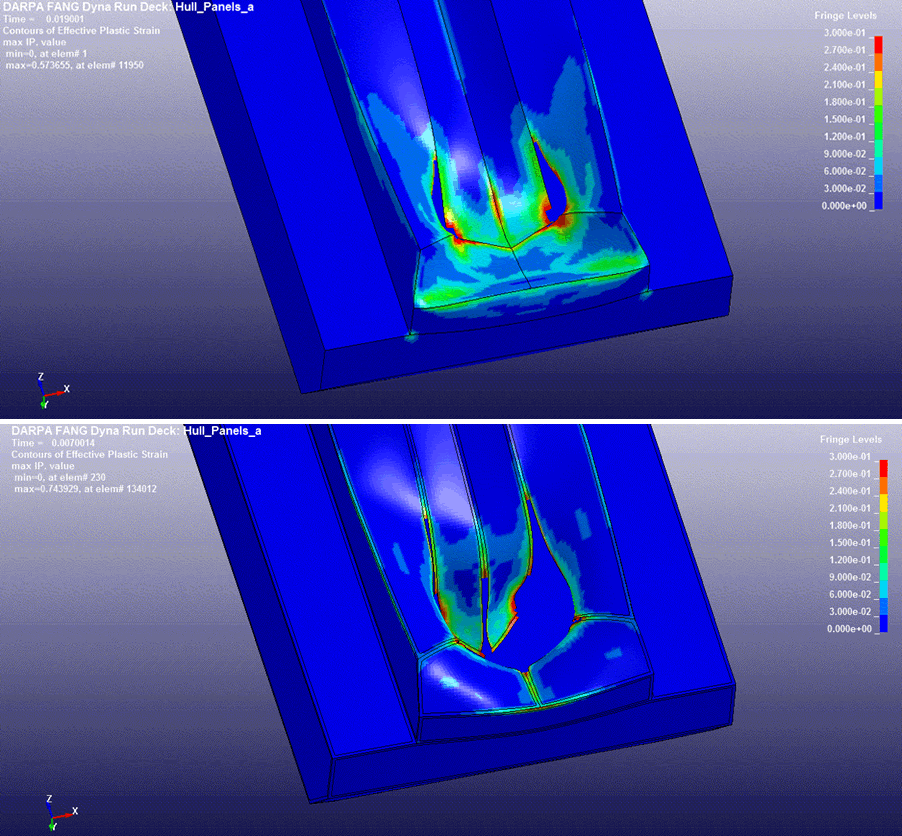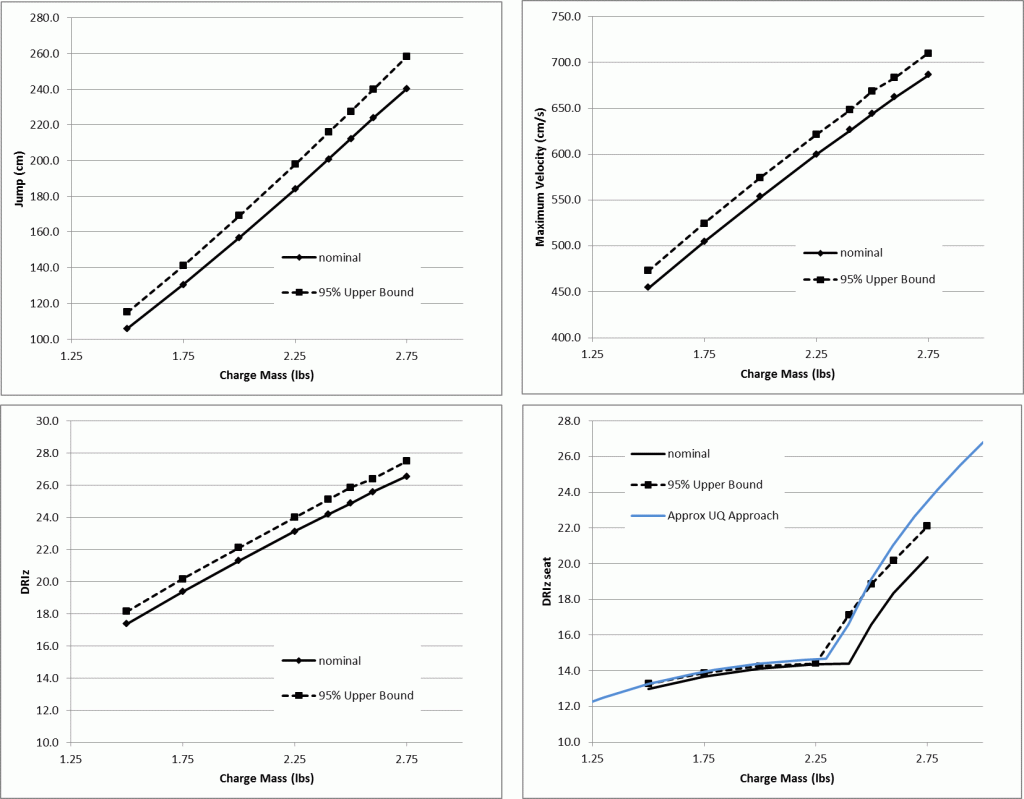TAMEST Blog Series: 2014 O’Donnell Awards Recipients (2nd Post by Dr. James Walker)
The second post in this series was written by Dr. James Walker, recipient of the 2014 O’Donnell Award in Technology Innovation. Dr. Walker was recognized for his pioneering work, development, and modeling in impact theory, penetration mechanics, material characterization and response under dynamic loading, and their application to resolving problems of international importance in personal protection and safety for defense and the space program.
View Dr. Walker’s presentation at the TAMEST 2014 Annual Conference.
The 2015 O’Donnell Awards recipients were announced in December through a press release and a video trailer.
Dr. James Walker, Recipient of the 2014 O’Donnell Award in Technology Innovation
Decreasing the Analysis Time to Speed Up Development of Ground Combat Vehicles
By James Walker, Ph.D.
I was a principal investigator in the DARPA Adaptive Vehicle Make (AVM) program, which is wrapping up this year (2014). AVM was a large research program with the ambitious goal of reducing the time from concept to production of a ground combat vehicle by a factor of five. There are many topics that come into play in the development and production of a new vehicle. Given our specific expertise in impact and blast, the Engineering Dynamics Department at Southwest Research Institute (SwRI), located in San Antonio, Texas, was in charge of delivering the survivability analysis tools. Our effort included three divisions at SwRI and four subcontractors.
The aim was that the vehicle be “correct by construction.” To achieve the AVM program goals, accurate modeling of vehicle systems’ behaviors is required. We delivered survivability tools that greatly sped up the design and analysis process. The SwRI team’s role in this program was to provide survivability models for ballistic, blast, and corrosion protection, and human factors models.
Our work produced significant survivability tools, highlighted by five major innovations:
- Innovation #1. Multi-fidelity analysis/varying levels of refinement in physics models, so that faster/lower fidelity computations could be performed in initial design space exploration, and more detailed analysis was performed during design refinement,
- Innovation #2. Automated meshing and connecting of parts for complex vehicle structure, with particular success in our automatic welding and bolting tools,
- Innovation #3. Uncertainty quantification and development of 95% bounding models thus indicating for minimal additional computational cost the robustness of the design,
- Innovation #4. Sophisticated large deformation/material failure material model library and more accurate blast loads, since the results of the computations cannot be more accurate than the material characterizations and the applied loads, and
- Innovation #5. Automating the whole survivability pipelines for blast and ballistics—essentially the designer can launch the entire analysis from CAD, making the survivability analysis tools easy for the designer to use.
In the DARPA AVM program, these tools went through an extensive testing beta test and a Gamma Test exercise by both commercial firms and engineering R&D laboratories. In that exercise, the SwRI team survivability tools received extensive praise, including
- “[Survivability tools] are much, much, much faster than the way we typically do things.”
- “Weeks of work done in an hour” [referring specifically to the automesher, autowelder, and shader]
- “Very impressed with the automation in blast and ballistics.”
- “There is nothing else like it [ballistic Shotline Viewer].”

Figure 1. Images from SwRI team computations during DARPA AVM showing hull deformation due to blast and an automatically meshed vehicle hull with internal structural members.
As an example of automating an important behavior, consider the ability to handle welds and heat affected zones (HAZs). In the SwRI team software, this was completely automated, with the software looking for all finite elements that were in contact with a weld and then placing HAZ material properties into those elements. Figure 2 shows the bottom of a double V hull where, on the left, the heat affected zone is not included, while on the right, it is. There is a clear difference in the amount of damage and hull deflection. Accurately modeling the hull deformation requires these capabilities, which traditionally have been very labor intensive to include in a vehicle model prepared for analysis.

Figure 2. Images of a blast computation on a conceptual hull without a heat affected zone (HAZ) (top) and with an HAZ (bottom), showing the importance of including the HAZ. The HAZs and the welds in these examples were automatically produced by the SwRI team survivability tools.
An additional feature of the SwRI team survivability tools was the development of uncertainty-based bounds on the blast response. Given the variability in blast events, the uncertainty-based bounds are extremely helpful in identifying robust solutions. The bounds are obtained by assuming probability density functions (PDFs) for the main variables with variation or uncertainty in the blast problem: the charge density, energy, and geometric shape, the soil density and moisture content, and finally the depth of burial of the charge and the standoff with the bottom of the vehicle. With assumed distributions on these variables, the resulting probability density functions for the upward velocity, jump height, and a computed Dynamic Response Index (DRIz) spinal injury metric (with and without a blast seat with active mechanisms) are all computed. These PDFs allow the determination of a 95% bounding solution. A technique was then developed for rapidly determining the 95% bounding solution for similar blast cases, thus not requiring a recomputation of the PDF in each case, thus providing excellent nominal response values and bounds on the blast response (see Figure 3).

Figure 3. Nominal and 95% upper bound for each plate response (jump height, maximum vertical velocity, DRIz, and DRIz_seat) for increasing charge mass for a test case.
These examples are specific details that add up to analysis tools that address the larger goal of quicker turnaround for ground vehicles that can provide crew protection for a variety of threats. We are proud to support our troops and to work to provide them the best protection possible. Historically Texas provided ground vehicles to the U.S. military and hopefully such manufacturing will occur in Texas in the future. Nonprofit research establishments such as ours (SwRI), whose mission is “benefiting government, industry and the public through innovative science and technology,” will continue to promote efforts to provide protection to individuals in threatening environments of any kind, both natural and manmade. I’m pleased that The Academy of Medicine, Engineering & Science of Texas recognized the importance of our efforts to understand impact and blast events and to provide protection in such events. The Edith and Peter O’Donnell Award in Technology Innovation in 2014 was great recognition of our work in protection systems over the years, from work on bullet proof vests to work on shielding the International Space Station. The recognition invigorated our entire research team and is much appreciated.
The Edith and Peter O’Donnell Awards are unique awards that encourage, promote, and recognize Texas researchers by recognizing them by the Texas residents of the National Academies and by the heads of research universities and organizations. These awards are highly regarded by the leadership of the various institutions and demonstrate that resources invested in various programs have been good investments. I know that Southwest Research Institute leadership was very excited by our O’Donnell Award in Technology Innovation, the first O’Donnell Award to be awarded to a San Antonio researcher. Further, O’Donnell Awards recognition brings the work of the recipients to a wider audience. Recognition of research demonstrates to various professional organizations and funding agencies that it is valued and has been reviewed by prestigious committees, and thus helps us quickly convey the importance and the relevance of the work.
Texas is a large state with lots of ongoing research, both basic and applied. Recognition of good research programs helps us advertise our work and attract funding and collaborators, both within and outside the state. Scientific and engineering research is an important component of the growing Texas economy. By recognizing innovation and cutting-edge technology advancements that occur in Texas laboratories, such as our work at Southwest Research Institute, it helps build connections and increase industrial outreach, which helps the economy and promotes more growth. Texas and the nation benefit by growth of high-technology positions and industry, and the Edith and Peter O’Donnell Awards help highlight science and technology success and promote more innovation and investment.

Dr. James Walker is an institute scientist at Southwest Research Institute (SwRI), a nonprofit engineering research and development center based in San Antonio.

